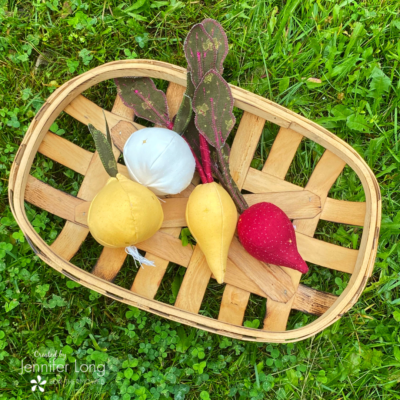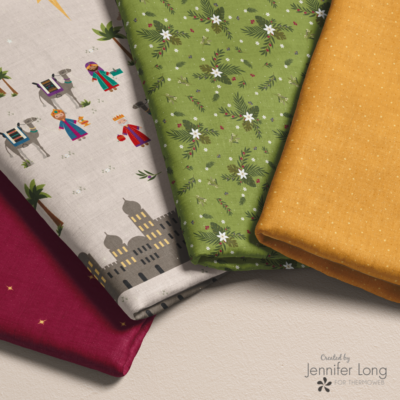Hello friends, this is Jennifer Long from, Sew A Story, fabric designer with Riley Blake Designs and a doll and quilt pattern designer. I am so excited today to be sharing with you this “Oh so sweet”, adorable and super simple project tutorial!
Beet Stuffie Tutorial
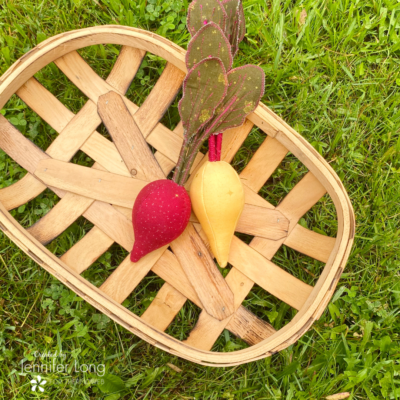
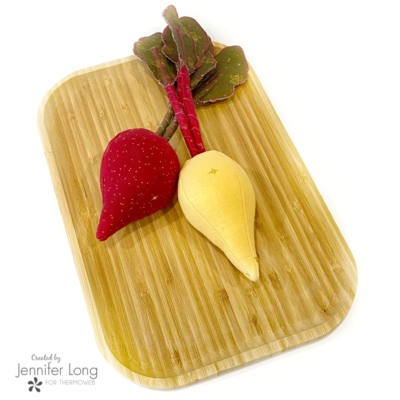
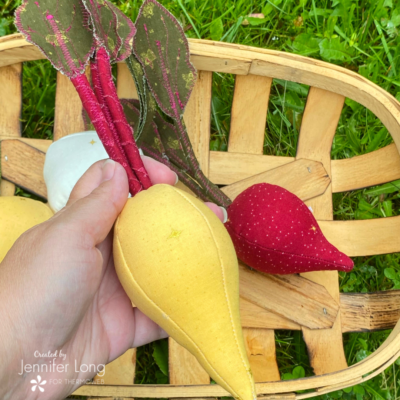
What You Need:
Tools
- Download the Beet Stuffie Pattern at http://www.sewastory.com/download-codes and use the code “BEETPDF”
-
Sewing Machine or Embroidery Machine
-
Iron and Wool Mat
-
Scissors
-
Hand sewing needle
-
Hemostat or stuffing tool
Materials
- Leaf Fabric: 10” x 10” Cotton fabric in green
- Stem Fabric: 10” x 10” Cotton fabric in greens or reds
- Beet Fabric: 10” x 10” Cotton fabric in burgundy, yellow or off white.
- 10” x 10” HeatnBond Fusible Fleece
- 5” x 10” HeatnBond Lite Iron-on Adhesive
- Fabric Fuse Glue
- Cotton clothesline rope smooth braid 7/32” approximately 20” in length
- Optional Embroidery Floss for accenting leaf veins
- Stuffing (polyfill)
We used fabric from my Silent Night Collection with Riley Blake Designs
Instructions:
1. Download the Beet Pattern designed by Sew A Story.
2. To create the stems of 1 beet cut (3)6” lengths of the braided cotton rope.
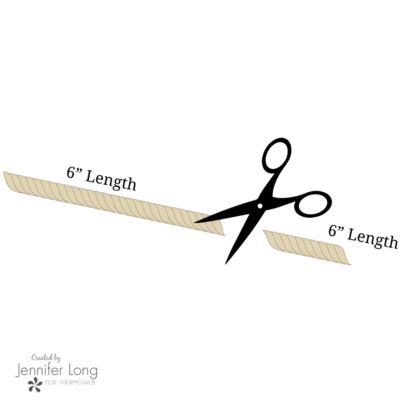
3. Gather the Stem fabric and cut (3) 1” x 10” strips of fabric.
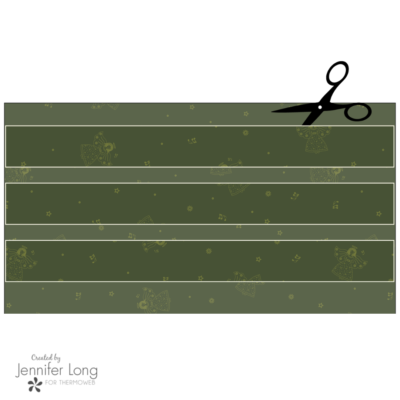
4. Squeeze small dots of Fabric Fuse Glue on the wrong side of the Stem fabric strip. Wrap the Stem fabric around the rope tightly, making sure the strip of fabric is slightly overlapping. Use a pin or a clip to hold each end secure while the glue dries. Repeat for all (3) Stem ropes and set aside.
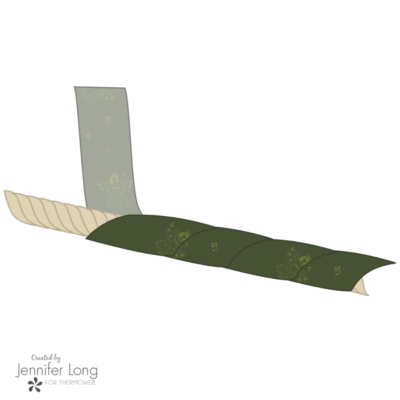
5. Lay out and cut (3) Leaf Backing Rectangles along on edge of the fabric square, as shown.
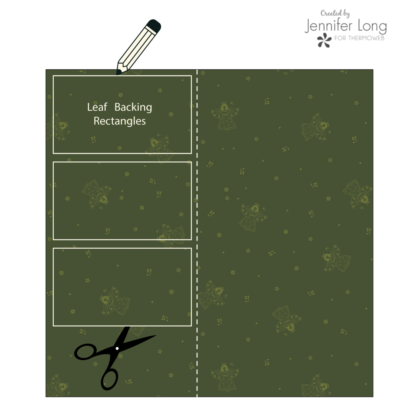
6. Fuse the back of the remaining Leaf fabric with HeatnBond Lite. Take care to follow manufacture’s directions for fusing correctly to the fabric. Leave the paper backing on to be able to trace the shape.
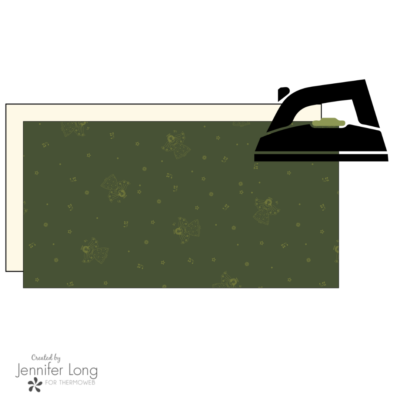
7. Trace (3) Leaf template pieces onto the paper side of the HeatnBond Lite. Cutout each leaf shape along the drawn outline.
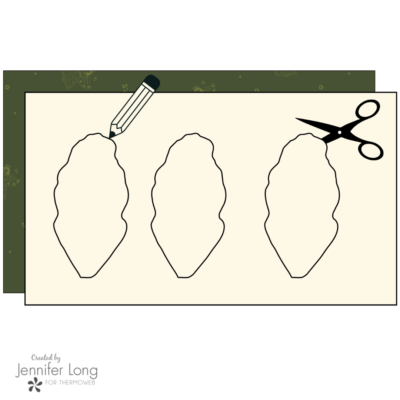
8. Remove the HeatnBond Lite backing paper. Sandwich the rope between the Leaf shape and the Leaf Backing Rectangle with RSO. Make sure the rope is inserted at least 1” between the leaf shapes. Use your iron at the appropriate setting to fuse the layers together. Take care to follow manufacture’s directions for fusing correctly to the fabric.
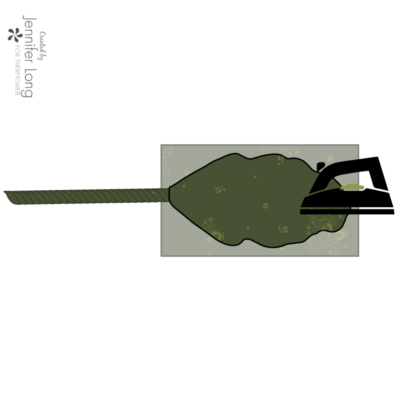
9. Cut around the Leaf shape following the contours of the fusible Leaf shape. This will ensure that the front and back leaf pieces are identical.
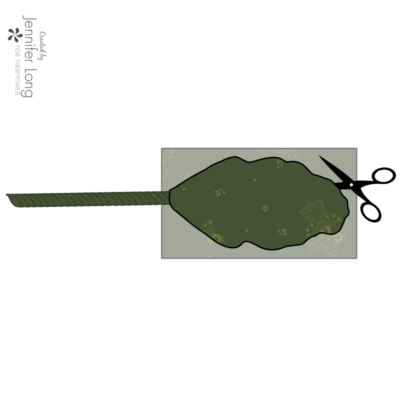
10. Using a finishing stitch such as a zigzag stitch, blanket stitch, or satin stitch, secure and finish around the entire Leaf perimeter and down the Stem. This will secure the leaf and wrapped stem fabric in place. Use an accent thread color for more detail and fun.
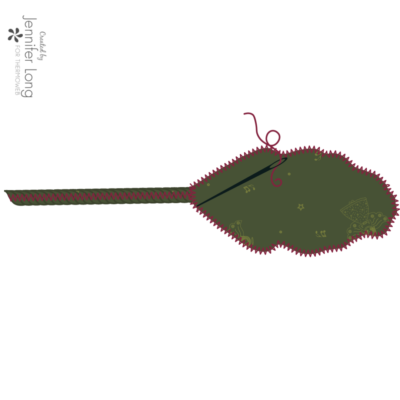
11. Transfer the vein lines from the Leaf pattern template (shown as dashed marks) onto one side of the prepared leaf. For best results, use an invisible or wash-away embroidery marker.
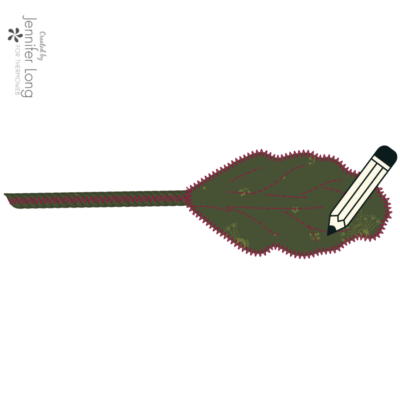
12. Continue with the same accent thread color used in step 9, hand or machine sew the Leaf veins with a running stitch or chain stitch.
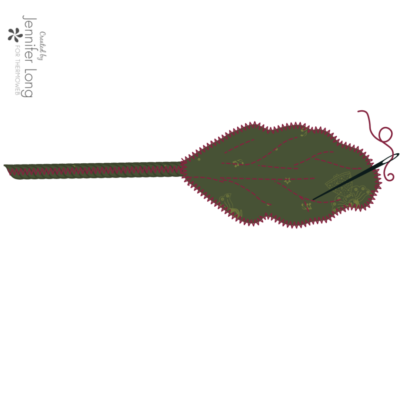
13. Repeat steps 8 to 12 to make at total of (3) complete Stem Leaves per Beet.
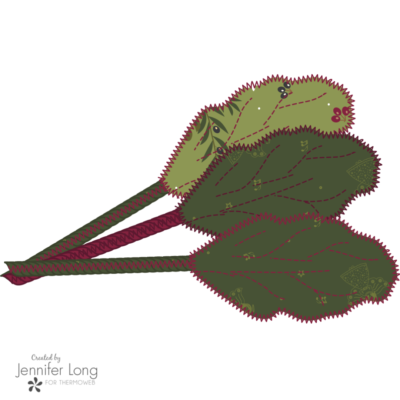
14. Fuse the wrong side of the Beet fabric to the Fusible Fleece. Take care to follow manufacture’s directions for fusing correctly to the fabric.
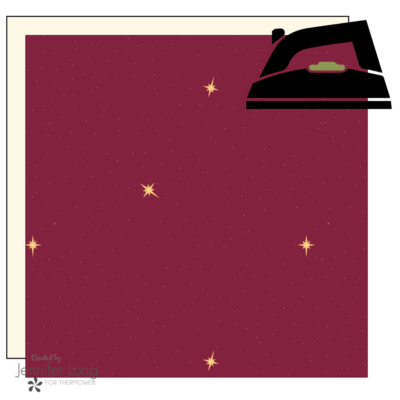
15. Using the Beet pattern template, trace and cut (4) Beet pieces from the prepared Beet fabric. Note: (4) Beet pattern pieces are needed for each finished beet.
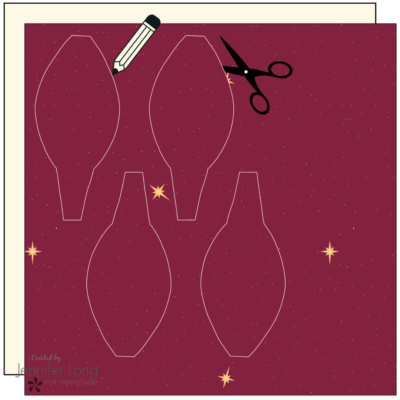
16. Place (2) Beet pieces RST, pin and sew along one side as shown. Repeat until all (4) pieces are joined together. Leave about a 1 1/2″ opening, at the top, for turning and stuffing.
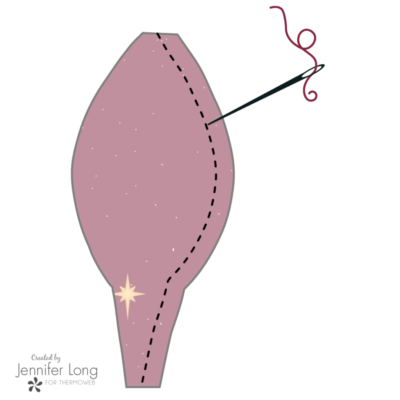
17. Using a small pair of scissors, carefully clip around the perimeter of the entire seam allowance and notch out all the inside corners. Be careful not to cut the stitch line.
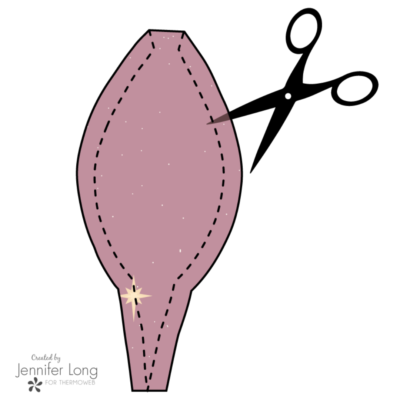
18. Turn the main beet right side out. Use a turning tool or chopsticks to fully push out the tip of the beet.
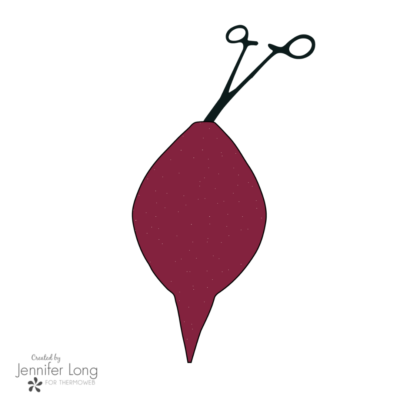
19. Insert the Leaves with Stems into the Main Beet opening about 1/4” to 1/2” into the top of the beet. They don’t have to be all exactly the same length! Hand stitch the stems into place securely using tiny stitches.
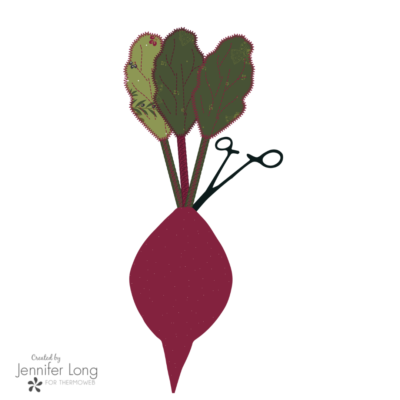
20. Using a stuffing tool or chopsticks, stuff the Beet shape with polyfill to the desired firmness.
21. Hand stitch the top opening using a tight Ladder Stitch. Smaller stitches help keep your work tidy and more secure.
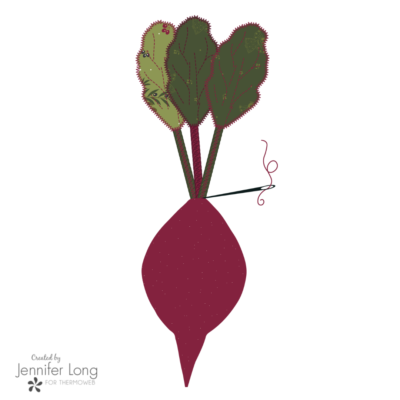
22. Embellish your Beet with decorative stitching, ribbons, or more!
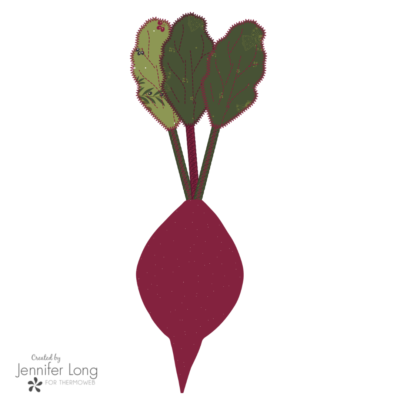
Use the same steps to create a few more beets, and encourage the child in your life to help select fabrics! You’ll be amazed at what they choose!
